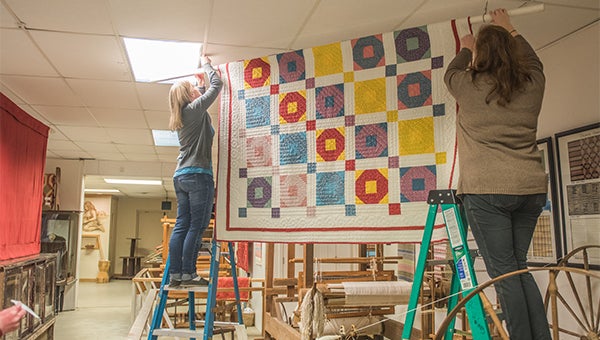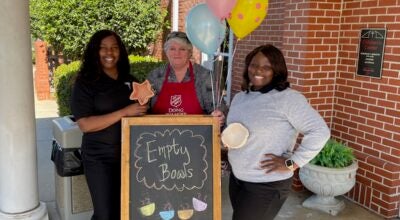STORIES IN STITCHES: Pioneer Museum of Alabama hosts annual quilt show
Published 3:00 am Saturday, February 11, 2017
No matter when a quilt was made or by whom, it has a story. When the Pioneer Museum of Alabama Quilt Show opens on Wednesday there will be more than 100 stories to share.
Kari Barley, museum director, said the biennial show will feature 100 quilts that date as far back as 1775 and as recently as yesterday and, yes, each has a story to tell.
“The kind of fabric, the pattern, the way it was stitched, the batting, even how the quilt was backed all tell a story,” she said.
Barley said quilting is a part of America’s heritage and quilts were original functional.
“Quilts were used primarily as bedcovers to keep people warm,” she said. “They were often used over windows and around doors to keep the cold and wind out. Quilts were used as play pallets for the children while their parents worked in the fields and they were prized items in hope chests and often used as burial wraps.”
Most of the early quilts were made from scrap materials and each piece of the quilt chronicled the family’s history.
“The quilts we have in the show were either made by people in the county or handed down through generations,” Barley said. “The oldest quilt in the show is a feather quilt and is part of the museum’s heritage quilt collection. The story of this quilt is that it was brought to Pike County from South Carolina around 1820. It was created by the grandmother of Sam Passmore, who, I suppose, was a local resident.”
Barley said a tag to the quilt’s story is that, in 1832, the Passmore family stood and watched as the Native Americans were being driven westward.
The museum’s heritage quilt collection is displayed year around and is a feature of the biennial quilt show.
“But most of the quilts in the show are on loan from people throughout the county,” Barley said. “The many different styles, patterns and colors bring the museum to life. The quilts add a whole different dimension to the museum and enhance many of the other exhibits.”
Barley said the variety of the quilts on display makes the show especially interesting and exciting.
“We have quilts that have been handed down for several generations, some that are brand new and all in between. There are quilts with animal motifs and some with Christmas designs. We have many different patterns and many of them like Granma’s Rose Garden, Log Cabin and Double Wedding Ring are generally familiar. We have pieced quilts, string quilts and crazy quilts.”
Barley is among those who are crazy about quilts.
“I’m crazy about crazy quilts,” she said. “They are often made of the finest materials and with decorative stitches. The crazy quilts were often put on the couch as a way of showing off.”
Showing off with quilts?
Loretta Simmons knows noting about showing off with quilts.
For her and her family quilts were functional.
Simmons is one of the many who have loaned quilts to the Pioneer Museum of Alabama for its 2017 Quilt Show.
“I was my mother’s helper when I was little and she taught me what I know about quilting,” Simmons said. “She made quilts out of our the family’s old clothes, scraps of material and out of feed sacks. We lived in this big, old house that was heated with a wood heater. It took a lot of quilts to keep us warm.”
As for patterns, Simmons said her mother’s quilts were string quilts or pieced quilts. She used cotton for the batting or wadding.
“I remember that my mother sometimes used cotton that had the seeds in it for the batting,” Simmons said. “Her quilt frame was set up on straight-back chairs in my brother’s room. She would roll the quilt back so he could get in bed.”
When warm weather finally came, Simmons said the quilts would be placed between the mattresses and out of the way until Old Man Winter made his first appearance in the fall.
Simmons said she appreciates the opportunity to display the quilts that are a part of her family’s heritage and to get to see the other “stories” on display.
Admission to the museum is $10 for adults, $9 for seniors 60 and over, $8 for ages six through college. Ages five and under are free.




